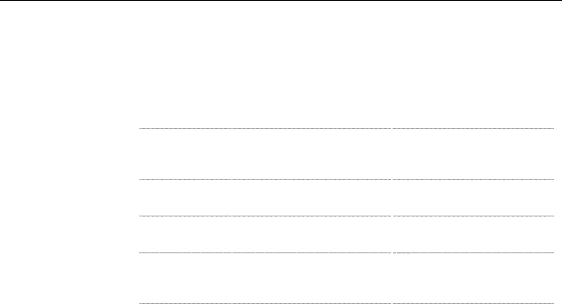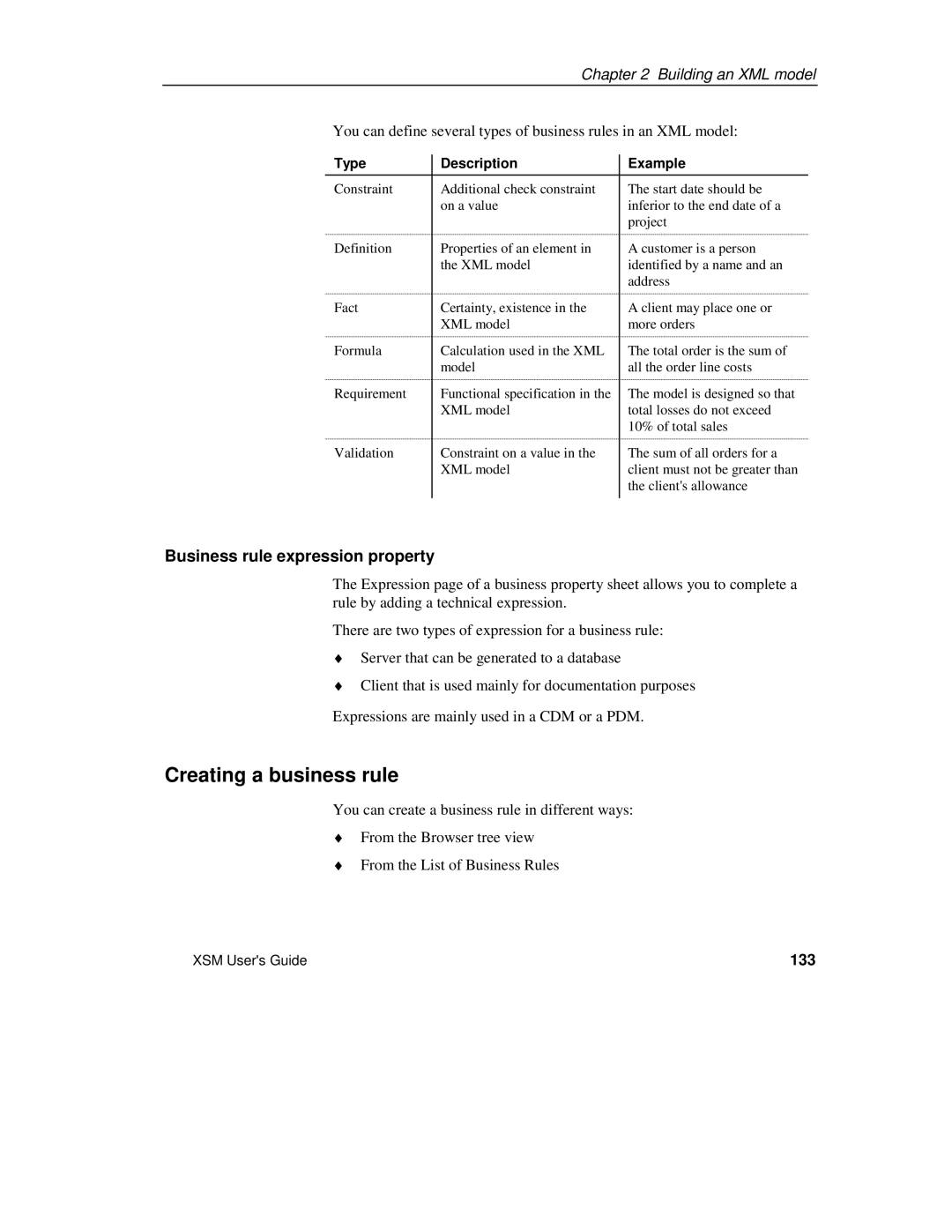
Chapter 2 Building an XML model
You can define several types of business rules in an XML model:
Type | Description | Example |
Constraint | Additional check constraint | The start date should be |
| on a value | inferior to the end date of a |
|
| project |
Definition | Properties of an element in | A customer is a person |
| the XML model | identified by a name and an |
|
| address |
Fact | Certainty, existence in the | A client may place one or |
| XML model | more orders |
Formula | Calculation used in the XML | The total order is the sum of |
| model | all the order line costs |
Requirement | Functional specification in the | The model is designed so that |
| XML model | total losses do not exceed |
|
| 10% of total sales |
Validation | Constraint on a value in the | The sum of all orders for a |
| XML model | client must not be greater than |
|
| the client's allowance |
|
|
|
Business rule expression property
The Expression page of a business property sheet allows you to complete a rule by adding a technical expression.
There are two types of expression for a business rule:
♦Server that can be generated to a database
♦Client that is used mainly for documentation purposes Expressions are mainly used in a CDM or a PDM.
Creating a business rule
You can create a business rule in different ways:
♦From the Browser tree view
♦From the List of Business Rules
XSM User's Guide | 133 |
